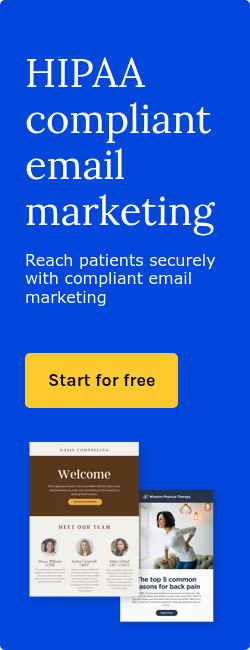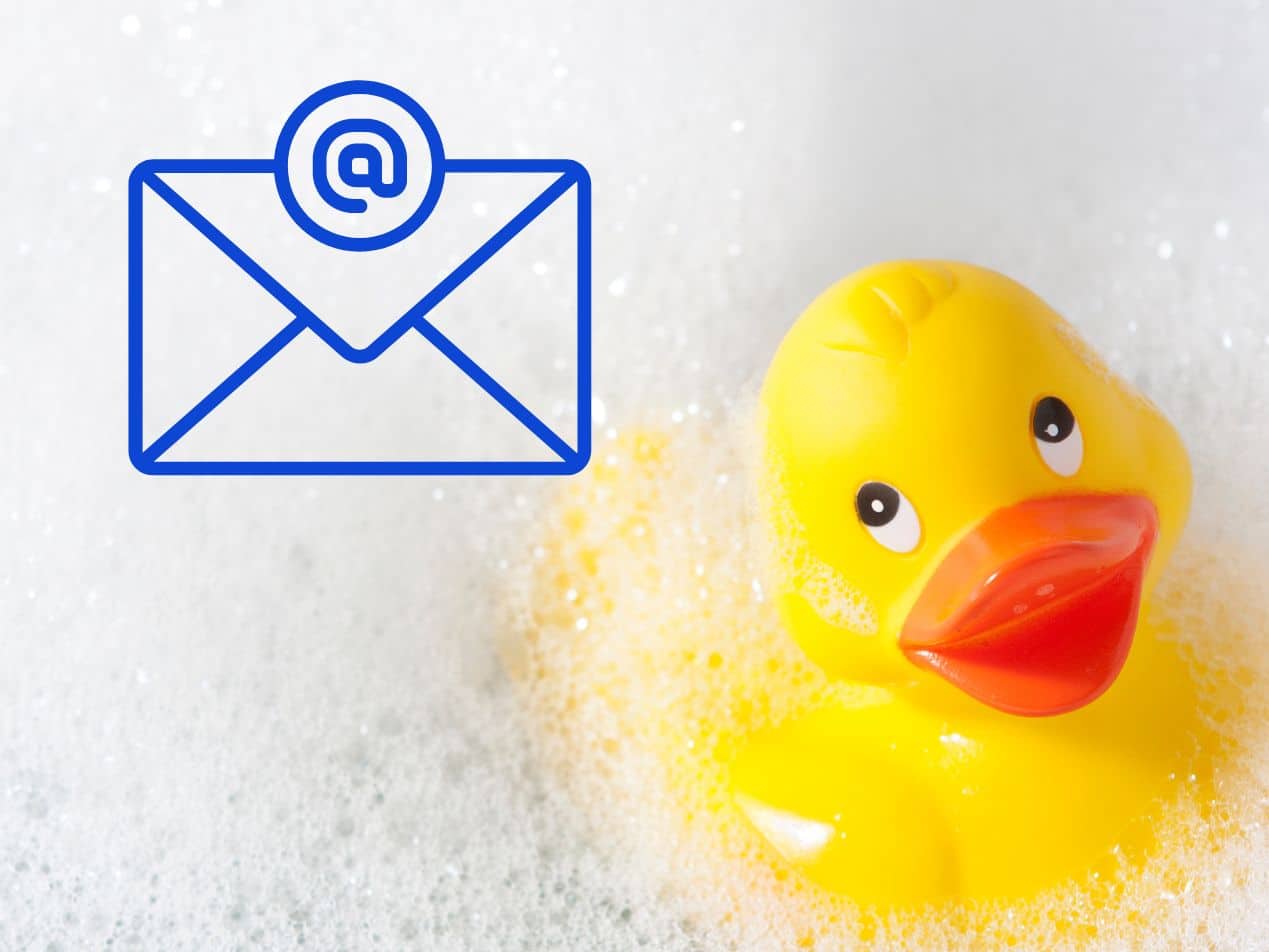
As a healthcare professional, you strive to engage with your patients while adhering to strict privacy regulations. Adopting a problem-solving, persuasive, and educational approach allows you to craft successful email marketing campaigns while respecting HIPAA compliance. Let’s explore the world of healthcare email marketing and the actionable steps you can take to create meaningful connections with your patients through HIPAA compliant email newsletters.
Use cases for healthcare email marketing
Patient education:
Deliver valuable content directly to your patients by sharing expert insights on preventive care, treatment options, and health tips. For example, craft a series of emails focused on managing chronic conditions like hypertension, including lifestyle recommendations, medication information, and self-monitoring techniques. You can foster trust and demonstrate your commitment to patient well-being by providing relevant and informative content.
Appointment reminders:
Help your patients stay on track with their healthcare by sending timely reminders for upcoming appointments. To provide added value, include actionable tips for preparing for the appointment, such as fasting instructions or a checklist of documents to bring. Personalize these reminders by addressing common barriers to attendance, such as scheduling conflicts or transportation issues.
Promotions and special offers:
Encourage patients to take advantage of your healthcare organization’s offerings by sharing limited-time discounts or exclusive services. For instance, if your practice offers cosmetic treatments, create a targeted email campaign showcasing a seasonal promotion for skin rejuvenation procedures. By highlighting the benefits and unique aspects of your services, you can attract new patients and retain your existing clients.
Navigating PHI and HIPAA compliance in email newsletters
Protected health information (PHI) refers to any identifiable data about a patient’s health status, healthcare provision, or payment for care. When crafting email newsletters, it’s essential to recognize PHI to maintain HIPAA compliance.
Common examples of PHI include:
- Patient names
- Medical record numbers
- Dates of service
- Diagnoses or treatment information
To stay HIPAA compliant when sending healthcare email marketing, follow these guidelines:
Minimize PHI:
Limit the use of PHI in your marketing materials, sharing only what’s necessary to convey your message. For example, when sending an email newsletter about a new diabetes support group, avoid including specific patient names or medical record numbers. Instead, use broader language like “individuals with diabetes” to ensure privacy.
Alternatively, use a specifically HIPAA compliant email marketing service. That allows you to use tailored content and dynamic text to move beyond generic bulk messages.
Obtain consent:
Seek explicit permission from patients before sending them promotional emails or newsletters containing PHI. Implement an opt-in system allowing patients to choose the type of communication they want. This consent can be done through online forms or given in person.
Encrypt email newsletters:
Protect sensitive information by using a secure, HIPAA compliant email marketing service. Research available options to ensure they provide strong encryption, safeguarding PHI from unauthorized access.
Winning over your compliance officer and management team
When seeking approval for email marketing initiatives, you’ll often face hesitancy from HIPAA compliance officers or a risk-averse management team.
Consider these persuasive strategies to get the go-ahead:
Emphasize patient benefits:
Highlight the positive impact of email marketing on patient outcomes, satisfaction, and engagement. Share data on how targeted communications can improve medication adherence, reduce no-show rates, or increase participation in preventive care programs.
Present a risk assessment:
Demonstrate your understanding of potential risks associated with email marketing and the steps you’ve taken to mitigate them. For example, outline the HIPAA compliant encryption measures you’ve implemented and the consent process you’ve established.
Showcase successful examples:
Share case studies or testimonials from other healthcare organizations that have effectively implemented HIPAA compliant email marketing. By highlighting the achievements of your peers, you can strengthen your argument for adopting similar strategies.
See case study: Atlas Counseling case study: Learn how Atlas Counseling offer customized, relevant information that targets each specific family’s needs.
By combining problem-solving, persuasive, and educational techniques, you can successfully implement HIPAA compliant email marketing that enhances patient engagement and satisfaction while also adhering to privacy regulations.
3 best practices to get patient permission
Obtain patient consent before including PHI in your marketing emails to ensure compliance with HIPAA regulations. Consider the following best practices and examples for obtaining patient permissions:
1. Opt-in forms on your website:
Create a dedicated opt-in form on your healthcare organization’s website, clearly stating the type of content patients can expect to receive. Make sure to include checkboxes for patients to grant consent for specific communication types or topics.
2. Permission during appointment scheduling:
When patients book appointments online or over the phone, include an option to opt-in to email communications. Provide a brief overview of the email content, and ensure the patient understands the benefits of receiving these messages.
3. In-person consent during appointments:
Educate patients about your email marketing initiatives during appointments and ask for their consent to receive communications containing PHI. Emphasize the benefits they can gain, such as health tips, appointment reminders, or information on new services.
Maximize the benefits of HIPAA compliant email marketing software
- Leverage the features and functionality of email marketing software to optimize your healthcare email campaigns.
- Use segmentation to target specific patient groups with tailored content, such as condition-specific education or age-appropriate preventive care tips.
- Analyze the performance of your email campaigns, measuring open rates, click-through rates, and conversions. Use this data to refine your strategy and maximize patient engagement.
Stay informed to keep your patients informed
Integrating these strategies and adopting a problem-solving, persuasive, and educational approach can create meaningful connections with your patients while maintaining HIPAA compliance. Stay informed about the latest regulations and best practices in email marketing, and continually refine your campaigns to deliver the best possible experience for your patients.
Related:
Subscribe to Paubox Weekly
Every Friday we'll bring you the most important news from Paubox. Our aim is to make you smarter, faster.

 Dean Levitt
Dean Levitt



